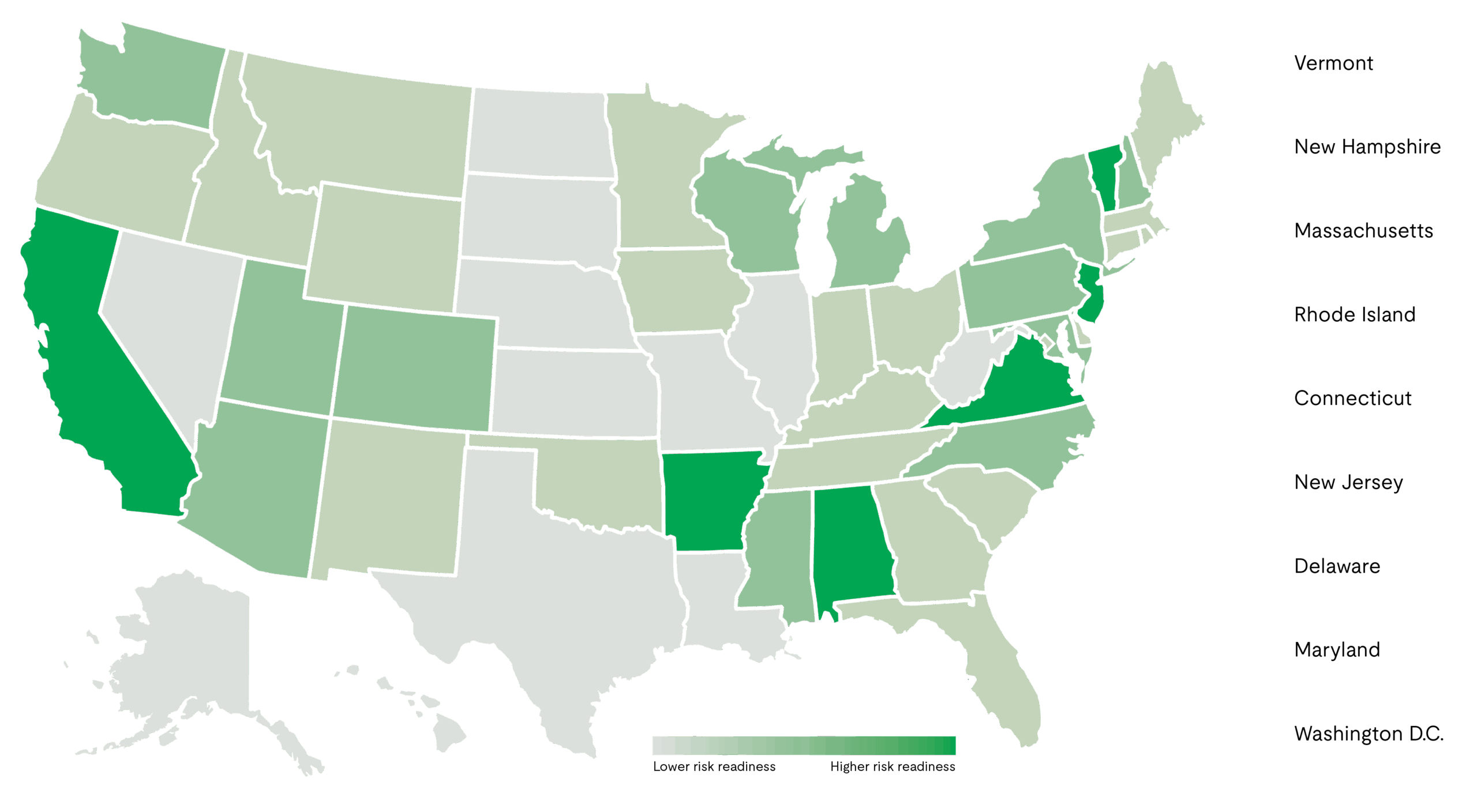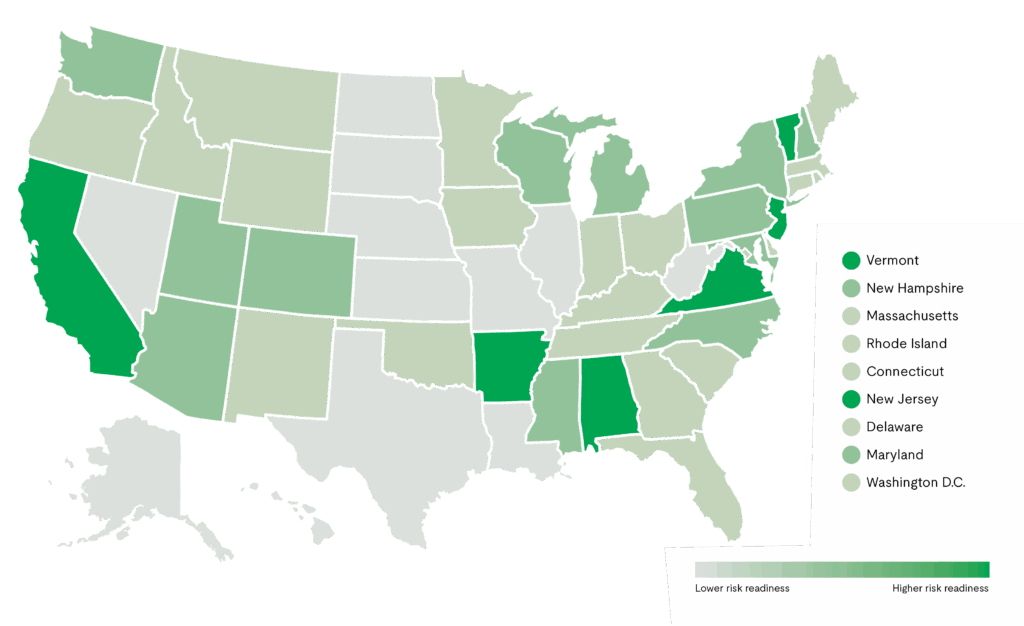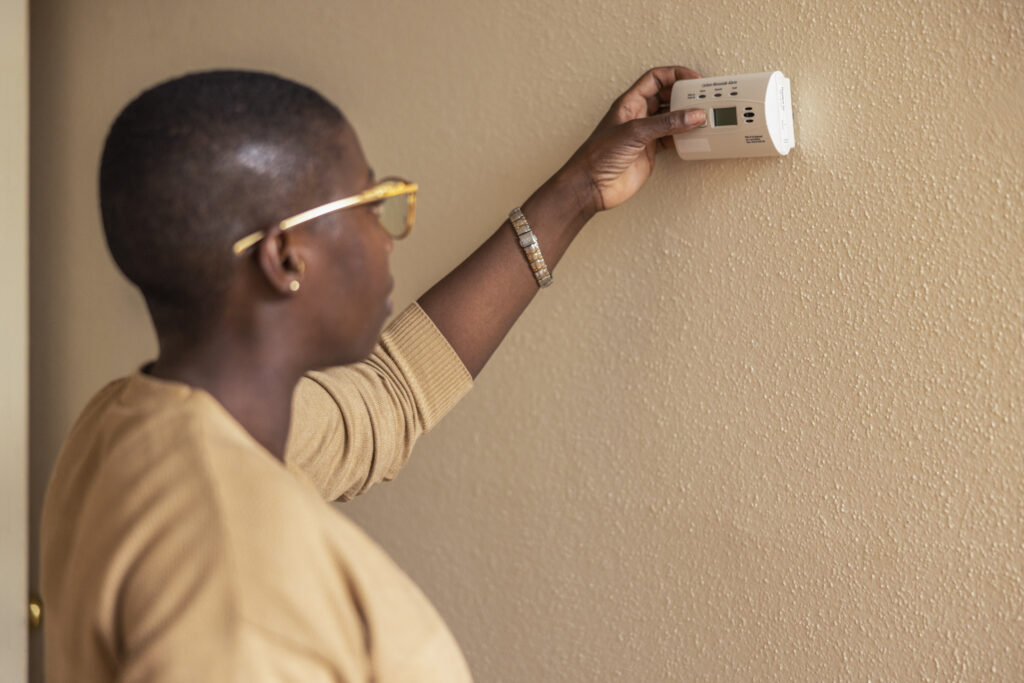Carbon monoxide (CO) poisoning is a pervasive yet preventable threat in the United States, causing significant harm each year. Recognizing the urgency of this “silent killer,” UL Standards & Engagement has developed the CO Risk Assessment to evaluate each U.S. state’s code and regulatory efforts, health outcomes, and public awareness.
EXPLORE RESULTS BY STATE
Click the plus icon to view state-specific results and 1-pagers.
Overview Map

Texas
CO Safety Starter
California
CO Safety Champion
Washington
CO Safety Leader
North Carolina
CO Safety Leader
South Carolina
CO Safety Advocate
New Jersey
CO Safety Champion
Arkansas
CO Safety Champion
Washington, DC
CO Safety Advocate
Maryland
CO Safety Leader
Delaware
CO Safety Starter
New Hampshire
CO Safety Leader
Massachuettes
CO Safety Advocate
Rhode Island
CO Safety Advocate
Connecticut
CO Safety Leader
Virginia
CO Safety Champion
Alabama
CO Safety Champion
New York
CO Safety Leader
Maine
CO Safety Advocate
Vermont
CO Safety Champion
Florida
CO Safety Advocate
Louisiana
CO Safety Starter
Missouri
CO Safety Starter
Iowa
CO Safety Advocate
Nebraska
CO Safety Starter
North Dakota
CO Safety Starter
South Dakota
CO Safety Starter
Wyoming
CO Safety Advocate
Montana
CO Safety Advocate
Idaho
CO Safety Advocate
Nevada
CO Safety Starter
Arizona
CO Safety Leader
Utah
CO Safety Leader
New Mexico
CO Safety Advocate
Colorado
CO Safety Leader
Oregon
CO Safety Advocate
Kansas
CO Safety Starter
Oklahoma
CO Safety Advocate
Alaska
CO Safety Starter
Georgia
CO Safety Advocate
West Virginia
CO Safety Starter
Pennsylvania
CO Safety Leader
Ohio
CO Safety Advocate
Indiana
CO Safety Advocate
Wisconsin
CO Safety Leader
Minnesota
CO Safety Advocate
Michigan
CO Safety Leader
Illinois
CO Safety Starter
Kentucky
CO Safety Advocate
Tennessee
CO Safety Advocate
Mississippi
CO Safety Leader

The assessment draws on multiple data sources across the last two decades to ensure a comprehensive assessment across public health outcomes, state-level mandates for indoor CO detector presence, and public awareness measures. These three pillars — weighted at 40%, 35%, and 25%, respectively — produce an overall weighted score out of 100 for each state. The weighting approach balances the diverse factors affecting CO safety, ensuring that the assessment reflects each component’s relative impact on public health.
Public Awareness Pillar Spotlight:
Americans Unaware of CO Risks
The assessment reveals significant disparities in CO safety across states. These gaps are amplified by the confusion many Americans have around CO detection. As noted in ULSE’s 2024 report, Understanding the Silent Threat, 36% of U.S. adults (about 86 million people) have no means of detecting CO leaks in their homes, and nearly 3 in 10 mistakenly believe that having a smoke alarm means they do not need a separate CO alarm.
In public spaces, half of Americans assume CO detectors are required and do not worry about
exposure, while 46% of travelers are unconcerned when staying in hotels or rentals because they believe every state mandates CO alarms. Generator-related incidents remain a pressing
concern, as an estimated 29 million Americans own portable generators, yet 62% of these owners do not feel at risk of CO poisoning — often using the devices improperly and increasing the risk of CO buildup.
Public Awareness & Behavior scores were calculated using survey data from ULSE’s nationally representative surveys of U.S. adults between August 2023 and August 2024, capturing CO alarm ownership, safe generator usage, and general knowledge of CO risks. View the full report for additional methodology.
By the Numbers
Hover over each stat below to learn more about CO awareness gaps.
Four Tiers of CO Safety
Each state’s final weighted score is translated into a tier — from CO Safety Champion (the highest tier) to CO Safety Leader, CO Safety Advocate, or CO Safety Starter (the lowest tier) — highlighting how effectively it has addressed CO safety across the three pillars.
EXPLORE RESULTS BY TieR
Hover over each tier to learn about each and view state-specific results.
Recommendations by Tier
Explore actionable steps your state can take to improve CO safety.
Recommendations by Tier
Explore actionable steps your state can take to improve CO safety.
Overall, the CO Risk Assessment serves as both a benchmark and a call to action. These findings emphasize that effective CO safety requires a mix of well-enforced policies, targeted public outreach, and consistent adoption of safe practices. Even the highest scoring states have opportunities to strengthen detection requirements, expand public education, and ensure equitable enforcement. By identifying best practices and areas for improvement, ULSE seeks to foster greater collaboration among regulatory agencies, industry leaders, and public health advocates. States that prioritize stronger CO safety policies and widespread education will be better positioned to prevent future tragedies, saving lives and ensuring
safer environments for all residents
In Partnership With:


